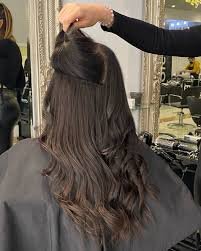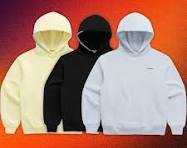Hair extensions have become a go-to solution for people who want longer, fuller hair without waiting months or years for it to grow. For years, sew in weave hair extensions have been one of the most popular choices. They offer a quick way to add volume and length, especially for those with thick or textured hair. But in recent years, a newer method has been gaining popularity—Brazilian knot extensions.
If you’re looking for a more natural, seamless way to add hair extensions, this method might be perfect for you. In this post, we’ll explore what Brazilian knot extensions are, how they differ from sew in weave hair extensions, and why more people are making the switch.
What Are Sew-In Weave Hair Extensions?
Let’s start by looking at the more traditional option: sew in weave hair extensions. These are extensions that are sewn directly into braided sections of your natural hair. First, your stylist braids your hair into cornrows or a similar base pattern. Then, using a needle and thread, they sew hair wefts (bundles of extensions) onto the braids.
Sew in weaves have been popular for decades because they’re secure, relatively long-lasting, and work well with thicker hair types. They usually last about 6 to 8 weeks before needing to be removed and redone. Many people choose sew ins because they can take a break from daily hair styling and try different hairstyles without damaging their natural hair.
But sew ins have some downsides. For one, they can feel bulky or tight, especially during the first few days. The braids underneath the weave can sometimes cause discomfort or tension on the scalp. Some people also experience itching or product buildup under the weft, especially if they don’t wash their hair carefully.
What Are Brazilian Knot Extensions?
Brazilian knot extensions offer a very different approach. Instead of sewing hair onto braids, this method involves attaching small sections of extension hair directly to your natural hair using a thread or elastic. There are no braids, no glue, and no harsh chemicals. The thread used to tie the hair is often color-matched to your own hair, making the knots almost invisible.
Brazilian knot extensions are done strand by strand, giving a much more natural look. Because the extensions are attached to loose hair rather than braids, your scalp can breathe better, and it’s easier to wash and care for your hair. The final look is lightweight, flexible, and very natural—so much so that it’s hard to tell you’re wearing extensions at all.
This method originated in Brazil and is popular among people who want to wear their hair in more natural styles without the added bulk of a full weave.
Key Differences Between Brazilian Knot Extensions and Sew-In Weaves
Let’s break down some of the biggest differences between these two extension methods:
- Application Method
- Sew in weave hair extensions are sewn onto cornrows or braids.
- Brazilian knot extensions are tied directly onto loose hair using a thin thread or elastic.
- Scalp Access
- With sew ins, it can be hard to reach the scalp to wash or moisturize.
- With Brazilian knots, your scalp is more exposed, so it’s easier to keep your hair clean and healthy.
- Natural Look
- Sew ins can look natural, but the wefts can sometimes be bulky or noticeable, especially if not blended well.
- Brazilian knots look extremely natural and are often completely undetectable when installed properly.
- Tension and Comfort
- Some people feel tightness or discomfort with sew in braids.
- Brazilian knots are typically more comfortable because they’re lighter and not sewn into tight braids.
- Hair Versatility
- With sew ins, some styles may be limited based on how the braids were made.
- Brazilian knots allow more freedom to style your hair in different directions.
Pros and Cons of Brazilian Knot Extensions
Let’s go over the pros and cons to help you decide if this method is right for you.
Pros:
- Very natural-looking finish
- No braids, glue, or heat needed
- Scalp and natural hair are more accessible
- Lightweight and comfortable
- Long-lasting (can stay in for 3-4 months with proper care)
- Suitable for most hair types
Cons:
- Takes longer to install (4-8 hours depending on hair length and volume)
- Requires a skilled stylist with experience in the method
- Can be harder to remove without help
- If not done correctly, it can cause tangling or hair breakage
Who Should Choose Brazilian Knot Extensions?
If you want a low-maintenance, natural-looking hairstyle that doesn’t involve tight braids or bulky wefts, Brazilian knot extensions might be the perfect solution. They’re especially great for people who:
- Have thinner or fine hair and want to avoid heavy weaves
- Prefer to wear their hair down or in natural styles
- Are sensitive to tension or scalp tightness from sew ins
- Want a longer-lasting, comfortable hair extension method
Tips for Maintaining Brazilian Knot Extensions
To get the most out of your Brazilian knot extensions, here are a few care tips:
- Wash regularly – Use sulfate-free shampoo and be gentle near the knots.
- Detangle carefully – Use a wide-tooth comb and start from the ends up.
- Sleep smart – Tie your hair in a loose braid or ponytail and use a silk bonnet or pillowcase.
- Avoid heavy products – Too much oil or cream can loosen the knots.
- Get regular checkups – Visit your stylist for maintenance every few weeks.
Final Thoughts
While sew in weave hair extensions are still a great option for many people, Brazilian knot extensions offer a more natural, comfortable, and breathable alternative. They may take a bit longer to install, but the end result is worth it—soft, flowing hair that moves like your own and blends perfectly with your natural texture.
If you’re thinking of switching up your hair game, consider giving Brazilian knot extensions a try. Just make sure you go to a trained stylist who has experience with this method. With the right care and installation, you’ll love the lightweight, flawless look that Brazilian knots offer.






